Visiting the town of Lugo, which claims to have the most intact/unmodified set of Roman city walls (Muralla Lugo) surviving, I was struck by a picture I saw showing how the towers used to have arched upper levels that reminded me of the Porta Nigra in Trier. I thought that the towers would really have looked much cooler if they still had those upper stories (right now it looks good, but isn’t visually striking in a way that will speak as much to less-history-obsessed people). Oddly, the surviving towers with upper stories weren’t gate towers, which means it is likely all the wall towers had those upper stories.
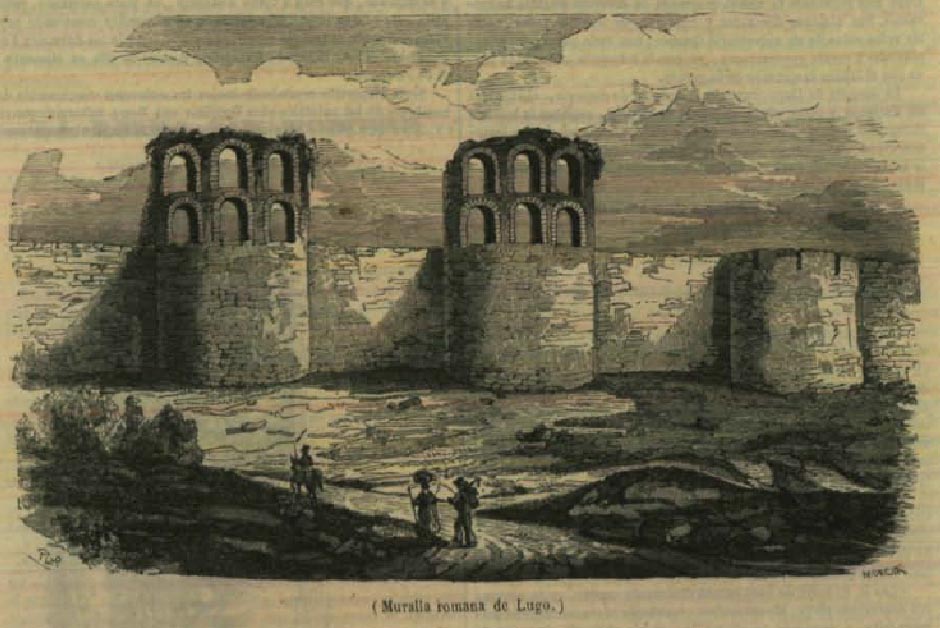
These upper stories may have had the wide openings for large weapons like scorpios, however, generally I think the purpose may have been to save stone and building time, with the extra height providing a lookout platform (more visible distance) and more dramatic/intimidating looks rather than purely defensive purposes.
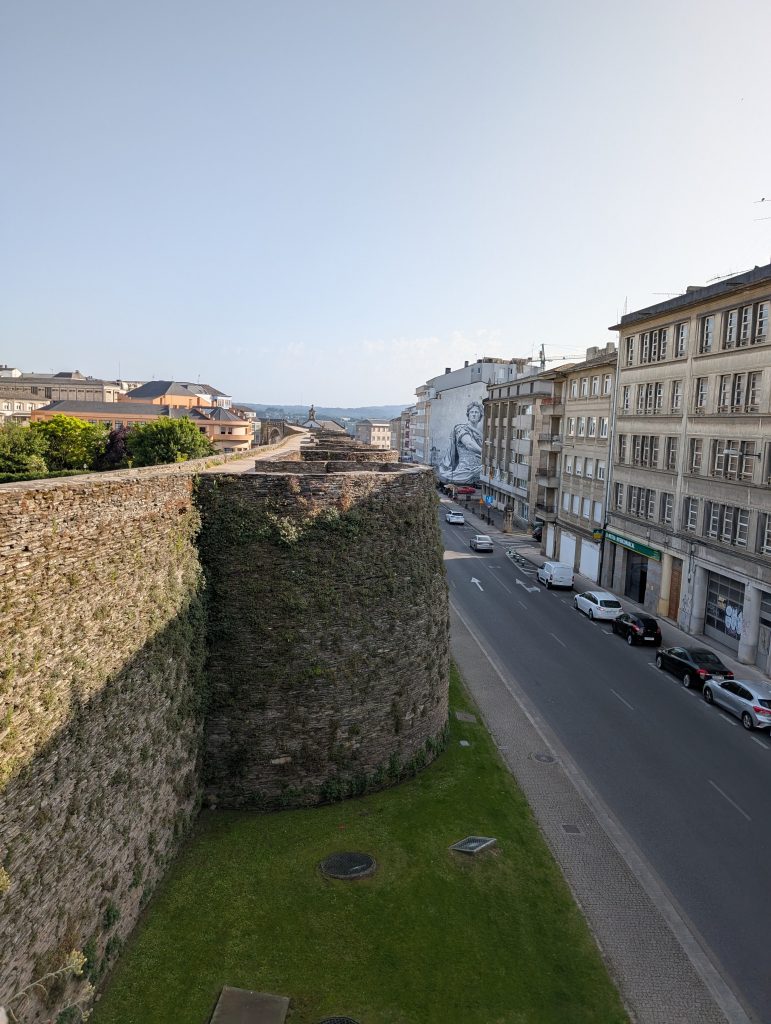
Giant arches wouldn’t be seen in medieval walls because medieval age defenses were most focused on having a small number of defenders hold out against much larger armies, whereas Roman defenses were generally meant to held by larger forces (I remember reading that the Roman walls of London were estimated to require a force of up to 10,000 men to be properly defended, while many large Medieval castles could be held by 30 men against large forces (ie Siege of Sterling Castle, 1304)). The medieval way might sound better but it actually means rebellions and revolts are much harder to suppress, as even small groups could holdout against large armies, something an emperor definitely doesn’t want.
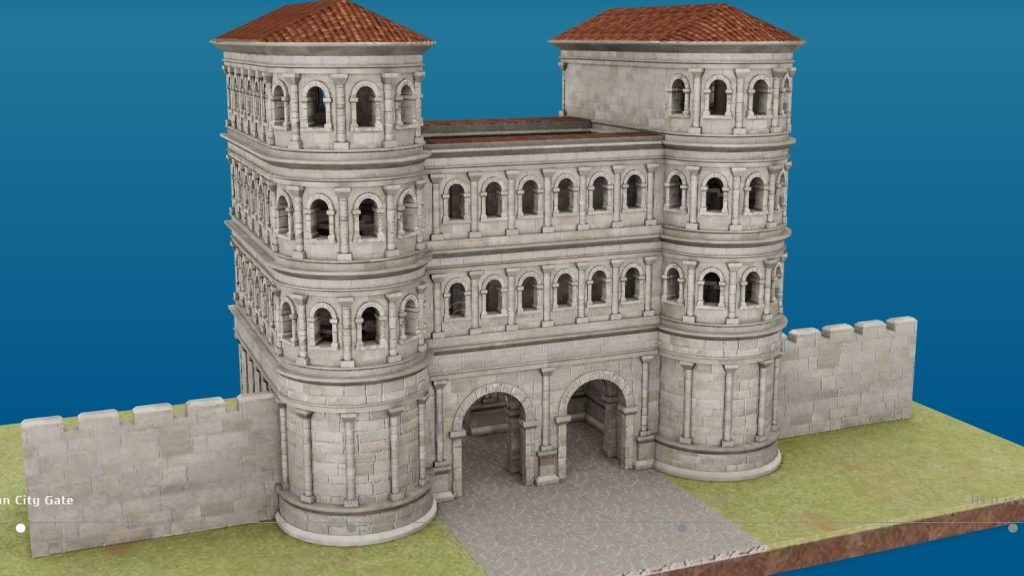
Roman buildings were primarily destroyed by people stealing the stone for new buildings. The more polite word is recycling, but since they usually were taken to build much uglier things which didn’t last as long, I don’t feel like they should be treated politely. Whole buildings really only survived in the few cases where people attempted to recycle the entire building, often as a church and sometimes as a castle. There are two other exceptions, when a region became so depopulated for so long that no one was around to recycle the old buildings, or in the case of Rome itself, where there were so many buildings made of so much stone (like the Colosseum) that, even tearing the old ones down gradually, some still (partly) survived.
Roman walls actually have a decent survival rate in that people continued to want defenses, but they often are not visible because the walls got rebuilt or added to over the years, with the Roman part hidden inside as foundation. My personal theory why the upper stories of the towers weren’t saved at Lugo was because they actually may have been a hindrance for the tiny garrison a smaller medieval city would manage. With the lower, cutdown towers, it is much easier to see along the lengths of the walls, Indeed, it seems to me possible that two or three watchmen could observe almost the entire breadth of the walls, however if the upper stories were present, there would be a lot more blind spots, requiring more watchers. Or else they may have just been more fragile and not deemed worth repairing over time.
The stone from the upper stories may have been used to repair the wall itself. I was wondering at the random isolated granite stones mixed into the wall at places, it maybe these are from the arch structure of the upper stories, used to repair the wall after it was breached in various sieges.
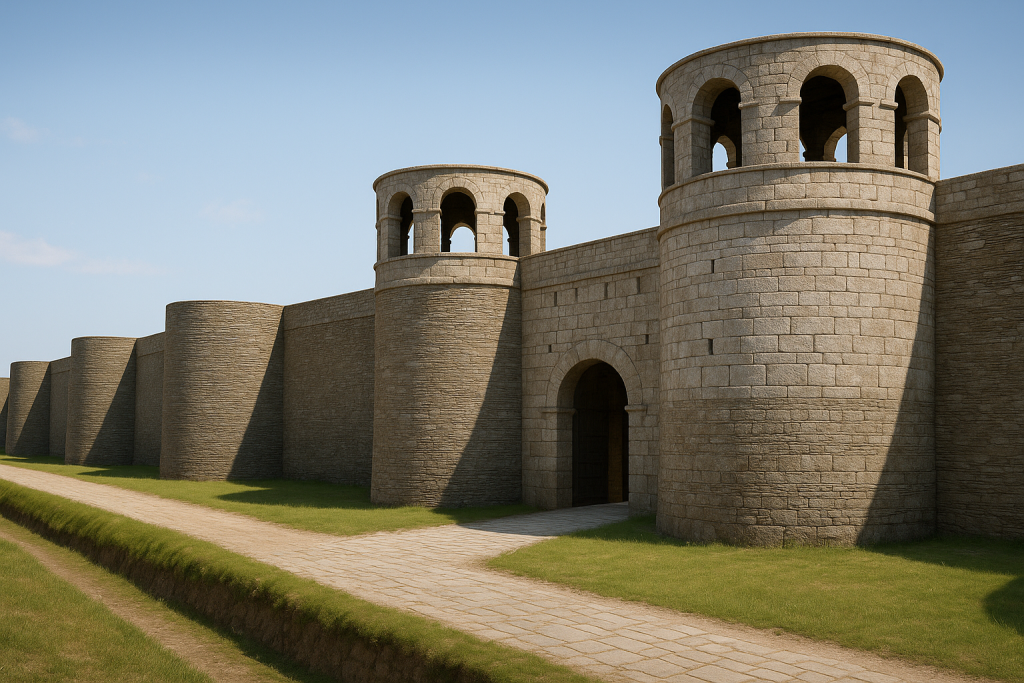
I wanted to see how the city would have looked with much larger arched towers but since I don’t have a time machine, nor a million hours to spend doing a manual reconstruction, I turned to AI image generation tools. These have gotten really exceptional in the last few years, indeed, in the last few months, they can now generate many things (like text) they could not do before. So I set about trying to create a rendition using Sora and DALLE from ChatGPT.
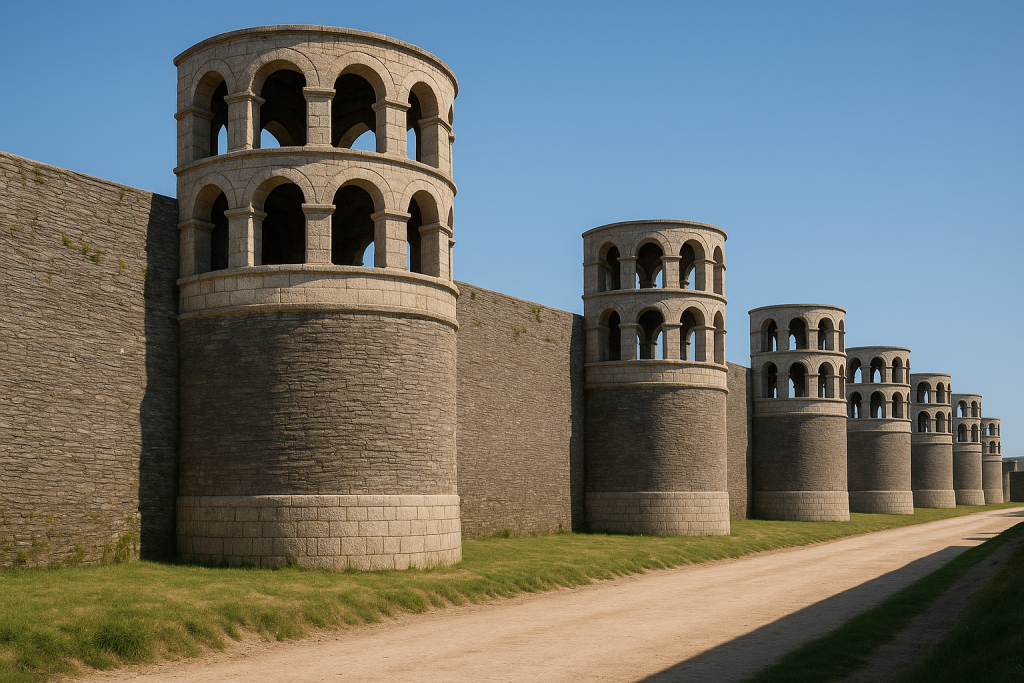
So close and yet so far. I feel like a grad student, sitting down with plenty of time to throw at it, could use this to generate a reasonable, historically accurate image if they can think of good ways to describe the necessary elements, and are willing to do a lot of experimentation with minor variations on the prompt. I think this will be the future of some archeology work, and the prompting nature means it is relatively easy to collaborate, as various experts suggest minor fixes and adjustments to get things to where they need to be. Also the natural variation (different seeds) of image generators can prompt interesting ideas about other ways things may have looked, less stuck in our own biases. Perhaps the biggest threat is how easily non-experts can do this, a flood of historically questionable images is likely to already be hitting the internet, ready to seduce the minds of people with inaccuracies. But Hollywood has already done far greater damage in that regard, so probably not worth worrying much about.
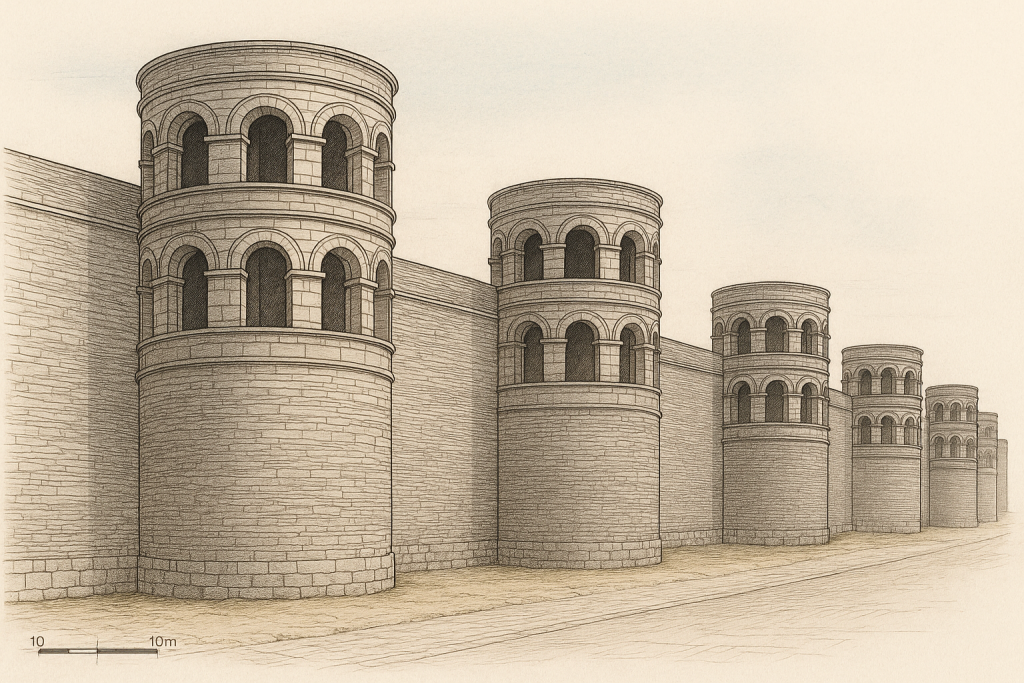
The models really struggled with the two story arches. It really wanted to give the towers just one layer of open arches despite my prompting nudges. It also always wanted to make the curtain walls go above the base of the arched upper levels of the towers. As you can seen, I gave up before resolving all of these issues. Overall this was way faster than someone trying to do this by hand or digitally, but tiny variations in prompts can have unpredictable results, which is a different kind of frustration, that isn’t as deterministic.
I did have a bit more luck using a digital reconstruction I found as a seed, and simply telling the model how to modify the input.
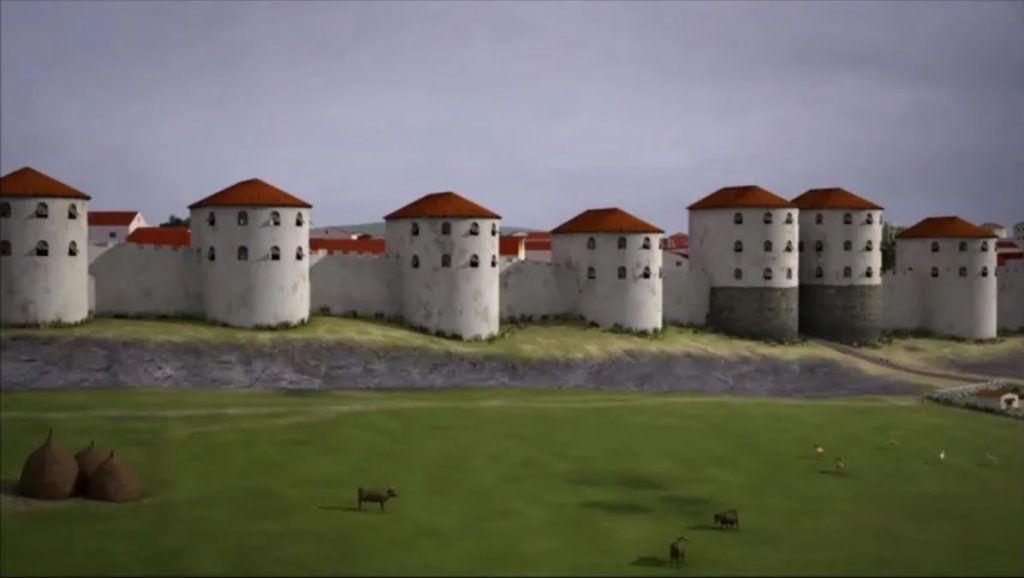
This does tell me that there is still going to be a place for archeological drawing and digital reconstruction of the more manual kind for some time, but that AI can really take the final step and make much more lifelike renderings that people can better connect with. I also easily fixed an issue with the walls being whitewashed, my (brief) research suggests that the original walls would have been the same plain slate as today (although with granite arches). Also the arches in the seed reconstruction and the AI derivatives look a little too small, the surviving ones are wider than the spacing between them (back to my idea about how this might have been partly about reducing costs of the masonry, and being more in line with Trier).
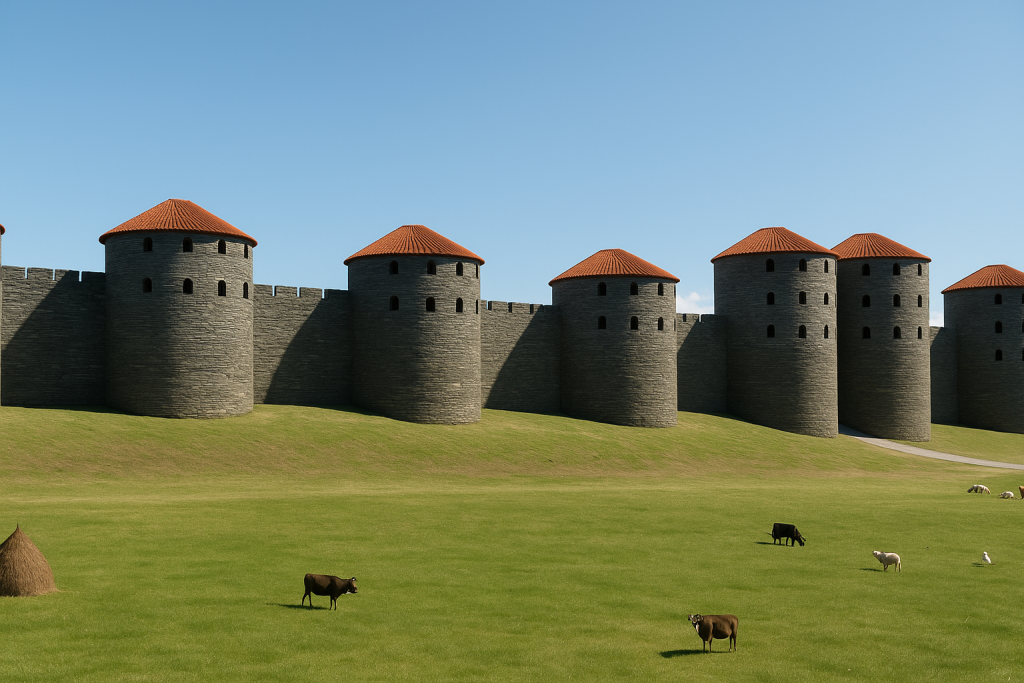
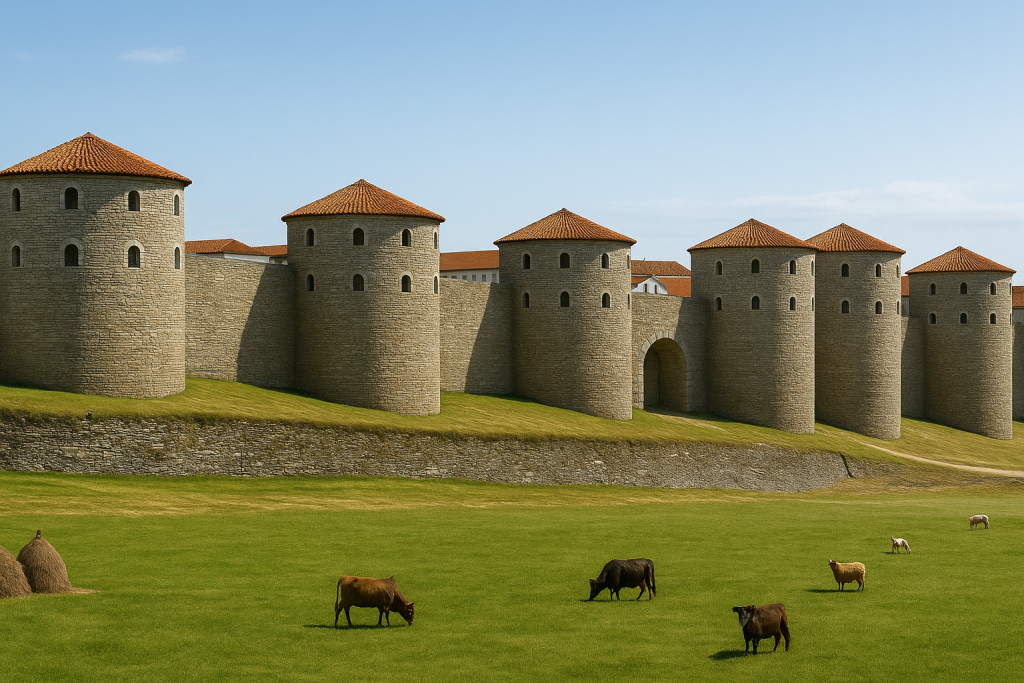
I am a reconstructionist and I think the city of Lugo should rebuild the upper levels on at least one side of the city wall and put some cafes and apartments in them (one apartment unit per tower, they aren’t that big). It would look great, and I have even thrown together an AI rendering of how this might looks. It has a number of mistakes but took all of five minutes to do and was essentially free.

One other thing I observed in doing research is that AI models may help archeology a lot by bridging across language barriers. Most of the more detailed writings on the walls of Lugo are in Spanish, and indeed much of the scholarship of the classics is hidden from me by being written in one of the many different European languages I can’t read or even search. Having a tool that can just search across that with a query in one language is a big help. Including references to “Muralla Lugo” (the Spanish name for the walls) routed my prompts into Spanish language sources more often and often returned better results (still in English, but oddly it would title the conversations in Spanish).
Colin Catlin, 2025
